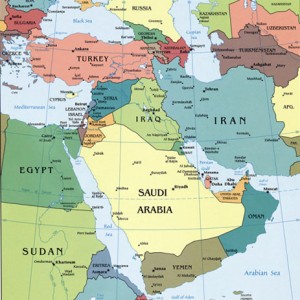The Pentagon is building a missile defense radar station at a covert location in Qatar as part of a larger plan to beef up US military presence and activity in the Middle East and further threaten Iran by militarizing its neighbors.
 The system is intended to expand Washington reach and control over a changing Gulf region, which is unsurpassed in its geopolitical importance due to its vast oil resources. Providing security to Iran’s regional enemies, like Qatar, serves as an excuse for military build-up.
The system is intended to expand Washington reach and control over a changing Gulf region, which is unsurpassed in its geopolitical importance due to its vast oil resources. Providing security to Iran’s regional enemies, like Qatar, serves as an excuse for military build-up.
Pentagon officials are also planning to deploy the first Terminal High Altitude Area Defense (THAAD) missile system in the area in the coming months, possibly in the United Arab Emirates.
The US will also lead its largest ever mine-sweeping exercise with some 20 other nations in the Persian Gulf from Sept. 16-27. Officials claim, unconvincingly, that the operations are defensive in nature.
“This is not an exercise that’s aimed to deliver a message to Iran,” Pentagon spokesman George Little stressed in a press briefing.
But when reinforcements started moving towards the region again early this month, officials said otherwise explicitly. “The message to Iran is, ‘Don’t even think about it,’” one senior Defense Department official told the New York Times. “Don’t even think about closing the strait. We’ll clear the mines. Don’t even think about sending your fast boats out to harass our vessels or commercial shipping. We’ll put them on the bottom of the gulf.”
When Obama accelerated the deployment of warships to the Gulf in 2010, the New York Times described it as “part of a coordinated administration strategy to increase pressure on Iran” and also “intended to counter the impression that Iran is fast becoming the most powerful military force in the Middle East.”
Onboard the USS Abraham Lincoln in the Gulf’s Strait of Hormuz last February, BBC reporter Jonathan Beale explained, “This carrier and these [fighter] jets are more than just a show of force, they’re here to send a clear message to Iran as to who really controls these waters.”
US policy toward the region is now primarily about militarily threatening Iran by surrounding the country with readied forces and weapons. Iran also faces harsh US-led economic warfare in the form of a sweeping oil embargo, even though US intelligence has concluded for some time that Iran’s nuclear program is civilian in nature.


